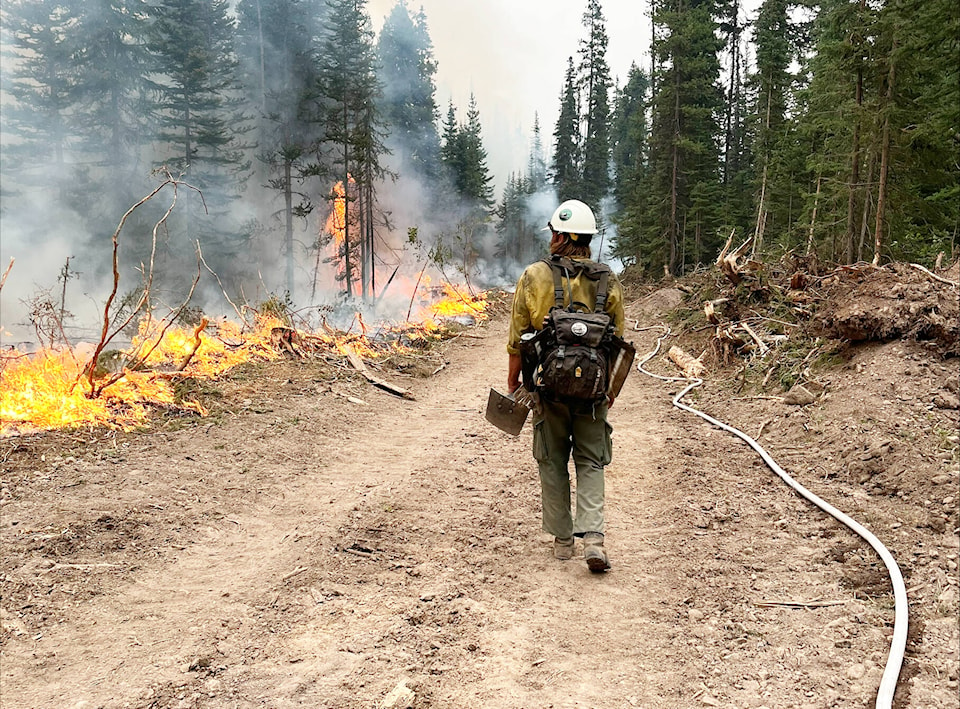The danger from two large fires near Houston may have passed for the time being but the B.C. Wildfire Service is predicting its work will continue well into the fall.
Both the Peacock Creek and the Old Man Lake blazes are now in the monitor-only stage, meaning that firefighters have been largely pulled off for duty on more active and threatening fires.
Structure protection such as sprinklers for properties near the Peacock Creek fire has also been removed and while evacuation orders have been cancelled, alerts remain in place.
Still, the wildfire service says it has people and equipment ready to move back to the areas if required.
“This may mean there will be active firefighting, or it may mean that there will be less response required but that, due to their overall size, the fire will not be able to be called “out” until we get widespread rain with cooler/temperatures and/or snow,” said Casda Thomas from the Northwest Fire Centre in Smithers.
Houston is also now the temporary home to a contingent from the Canadian Armed Forces, one of several communities along Hwy16 hosting soldiers as the province continues bringing in people from other parts of Canada and the world to aid its own wildfire fighters.
“We are grateful to have the assistance of the Canadian Armed Forces,” said Thomas in adding the soldiers are on the active fire lines.
“The response efforts have been dynamic over the past several days and Canadian Armed Forces personnel have worked on many of the large incidents within the Nadina Complex. Going forward, they will continue to be utilized in the areas where they are most needed at any given time,” she said.
Also in the area are 100 firefighters from Costa Rica, contract crews and “hot shot” crews from the United States. The latter are named for their specialized training and ability to respond to challenging situations.
A management team from Ontario is now responsible for firefighting efforts around Houston.
Heavy equipment to build fireguards, ferry in other equipment and transport water will be hired out from private contractors as required.
Aside from help from elsewhere, Thomas said the wildfire service is prepared to extend the employment contracts of its own seasonal people as well contract crews.
“We do have the ability to extend the season further for both our staff and contract firefighters who are able to accept extensions,” she said.
At one point the wildfire service established seclusion zones around the Peacock and Old Man Lake fires banning members of the public from entering areas where firefighters are working or present.
“There are many potential dangers around our worksites and fire perimeters, including heavy equipment traffic, low visibility when smoke is present, danger trees, ash pits and other safety concerns,” Thomas said.
As of noon Aug. 10, the exclusion zone around the Old Man Lake fire was erased given the work crews had done in containing the blaze.
The wildfire service continued to advise caution for those travelling within that area.
“Trees that have been damaged by fire might be unstable and could fall down. Ash pits can be hard to detect and can remain hot long after the flames have died down,” it warned.
One of the methods to prevent fires from spreading is for firefighters to start their own fires so as to deprive a fire of fuel and that is always under consideration, she added.
“On each wildfire we are always planning ahead and considering contingency plans should they be added,” Thomas continued.
